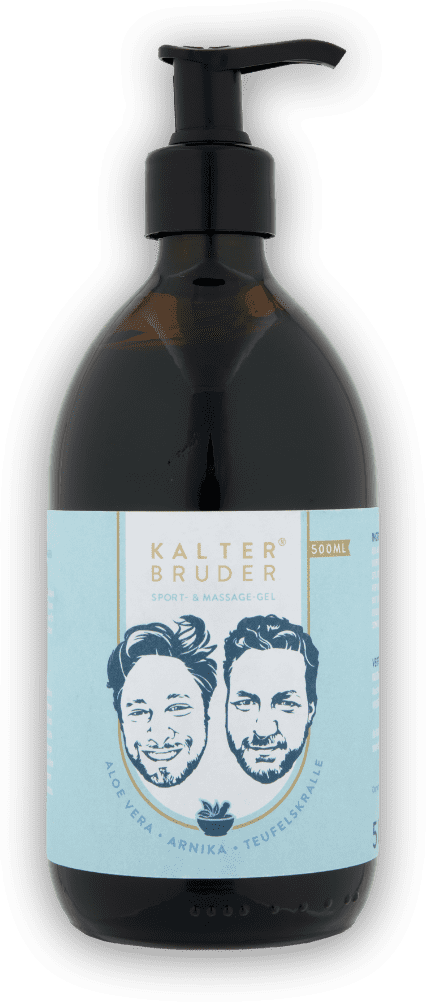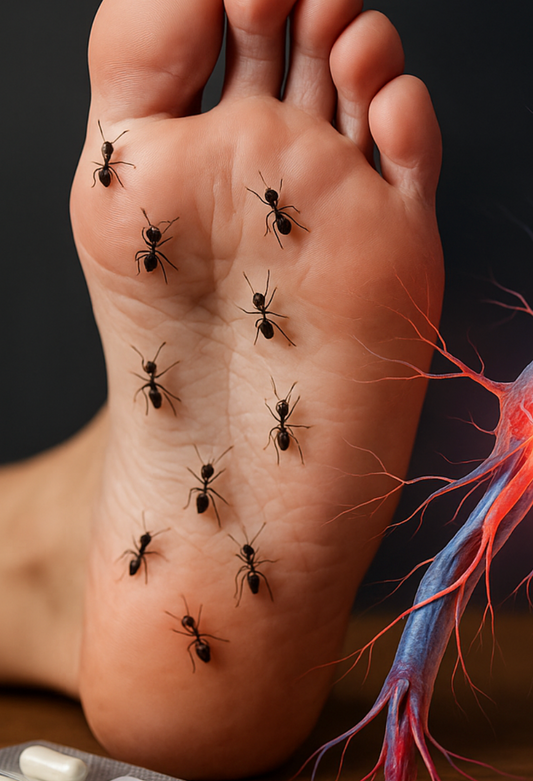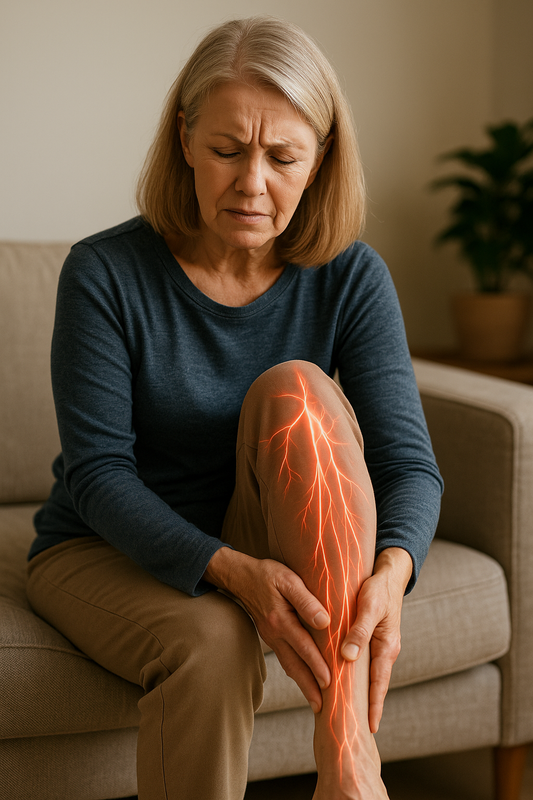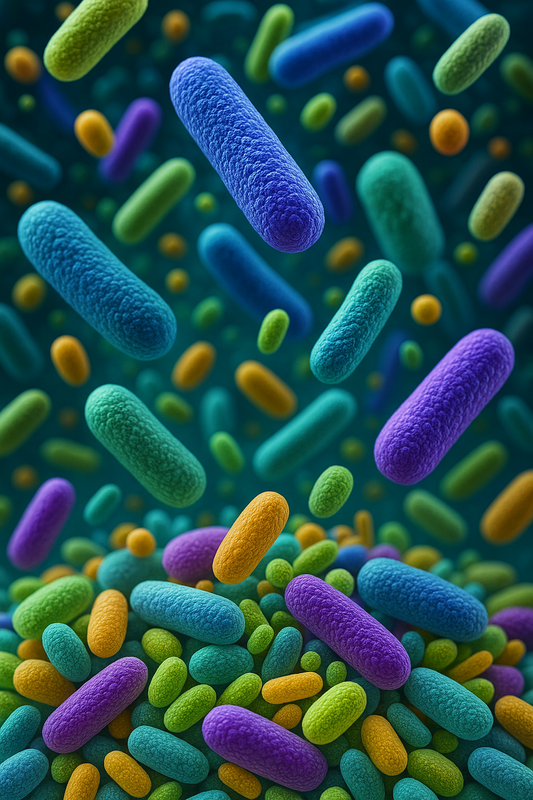A critical look at the risks and side effects of RLS and polyneuropathy
Cannabis is increasingly being discussed as a medical option, including for conditions such as restless legs syndrome (RLS) and polyneuropathy. In recent years, society's image of cannabis has become largely more positive - mainly because of its potentially therapeutic effects. But despite the current enthusiasm and increasing availability, there are significant risks that are often overlooked. Cannabis should be viewed critically, especially when it comes to the development of addiction and the long-term effects on the body.
I, Carsten, one of the founders of Kalter Bruder®, have a lot of experience with cannabis myself and have been suffering from RLS and the associated sleep disorders for over ten years. Even though cannabis helped me on a few sleepless nights, I quickly experienced severe side effects and the onset of an addiction. In this article we want to clarify: What are the risks and consequences of consuming cannabis, especially with long-term use? And what alternatives - such as CBD - are available to achieve safe and lasting relief from the symptoms?

The Development of Addictions: How Cannabis Affects the Body
Cannabis contains two main active ingredients: THC (tetrahydrocannabinol) and CBD (cannabidiol). While THC is responsible for the "high" feeling and psychoactive effects, CBD is valued for its potentially calming and anti-inflammatory properties. But THC in particular carries a high risk of addiction. A frequently cited figure is that around 9% of regular cannabis users develop an addiction. However, recent studies suggest that this number could be significantly higher, depending on consumption patterns and age. In particular, the risk rises to up to 17% for young people under 18 years of age, and even higher with heavy daily consumption.
How does addiction develop? Cannabis addiction develops through the activation of the brain's reward system. THC binds to cannabinoid receptors, stimulating the release of dopamine - the "happiness hormone". This regular artificial release means that the brain needs ever higher amounts of THC to achieve the same high. This so-called tolerance development leads to frequent consumption in ever larger amounts, which can lead to psychological addiction. Cannabis consumption can also cause physical withdrawal symptoms, such as irritability, sleep disorders, anxiety and depressive moods.
Cannabis use and other drugs: The dependency spiral
The development of addiction to cannabis is similar to what happens with other medications, such as painkillers, sleeping pills or nasal sprays. These substances often work well at first and provide relief, but the body quickly adapts. A vicious circle begins, which is known as the tolerance spiral .
How does this spiral occur? When you take a substance regularly - be it a painkiller or cannabis - your body gets used to the effects. This means that the initial dose is soon no longer sufficient to achieve the desired effect. You have to increase the dose to feel the same result. This happens with many medications, for example:
- Painkillers (opioids): The body develops a tolerance, so that increasingly higher doses are required to relieve pain. In the United States, the opioid crisis is a well-known example of this phenomenon, in which millions of people became addicted to painkillers.
- Nasal spray: If you use the remedy for a blocked nose for too long, you will often experience a worsening of the symptoms as soon as the spray wears off – a so-called rebound effect , which leads to you using the spray even more often.
- Sleeping pills: Many people become dependent on sleeping pills. Here too, the effectiveness decreases over time and the body demands more and more in order to sleep through a normal night.
It's similar with cannabis: the initial effect wears off, the body demands more and this not only leads to tolerance, but often also to physical and psychological dependence. This is particularly problematic for people with chronic illnesses such as RLS and polyneuropathy, as they often need quick relief and fall into the trap of needing more and more substances to control the symptoms.
What happens in the body when you are addicted?
The central nervous system plays a key role in the development of addiction. When the body receives a substance repeatedly, the reward system changes. It adapts to the regular intake and reduces its own production of happiness hormones such as dopamine. As soon as the substance is stopped, withdrawal symptoms occur because the body has to compensate for the lack of dopamine.
What is particularly dangerous is that this tolerance development occurs with almost all artificially administered substances . Regardless of whether it is medication or drugs, the effect wears off over time and users feel compelled to increase the dose or try new substances to achieve the same effect. This not only leads to dependence, but also to an increased risk of side effects because the quantities consumed become ever larger.
CBD – An alternative to THC? A differentiated view
CBD (cannabidiol), the non-psychoactive component of the cannabis plant, is often promoted as a safe alternative to THC-containing cannabis. CBD has gained popularity in recent years due to its anti-inflammatory, pain-relieving and anti-anxiety effects without the risk of addiction. But how effective is it really?
While there are studies suggesting that CBD can help with chronic pain and nerve damage, the results are not consistent. A 2019 study of 1,000 participants showed that 60% of subjects experienced an improvement in their RLS symptoms. However, it remains unclear to what extent this is due to the placebo effect or whether the dosage needs to be optimized to achieve real relief.
Personal experience with CBD: My own experience with CBD, however, was disappointing. Despite several attempts with different preparations and dosages, I hardly felt any effect. This discrepancy suggests that the effect of CBD depends heavily on individual factors - such as metabolism, the type of symptoms and the CBD dosage. Therefore, CBD should not be viewed as a miracle solution, but as a possible building block in a more comprehensive treatment plan.

Economic Interests and the Legalization of Cannabis Worldwide
The medical cannabis market is booming worldwide, with both economic and political interests playing a major role. The global medical cannabis market was valued at around $20 billion in 2020 and is expected to grow to over $90 billion by 2028. This shows that cannabis is not just a medical issue, but that economic interests are also being pursued.
Many countries have already legalized or decriminalized cannabis, especially for medical purposes. Countries where cannabis is legal include:
- Canada: Full legalization of recreational and medical cannabis.
- USA: In several states, such as California and Colorado, cannabis is legal for recreational use, in many other states only for medical purposes.
- Germany: Cannabis is permitted here for medical purposes and can be prescribed under strict conditions.
- Netherlands: Famous for its tolerated use in coffee shops.
Cannabis substances available in pharmacies and their side effects
In Germany, various cannabis substances are legally available in pharmacies. These include both THC-containing products and CBD preparations. Here is an overview of the most common substances and their effects:
- Dronabinol (containing THC)
- Effect: Pain-relieving, calming, appetite-stimulating
- Side effects: dizziness, fatigue, psychological dependence, cognitive impairment
- Sativex (THC/CBD combination)
- Effect: Relief from spasticity and pain
- Side effects: nausea, dizziness, drowsiness
- Epidyolex (contains CBD)
- Effect: Anticonvulsant, anti-inflammatory, relaxing
- Side effects: fatigue, diarrhea, loss of appetite
Conclusion: Cannabis – A Double-Edged Sword
Cannabis may seem tempting at first, especially for people who suffer from chronic conditions such as restless legs syndrome or polyneuropathy. It seems to offer quick relief from pain, restlessness and sleep disorders. But the price for this can be high: dependence, diminishing effectiveness and long-term health consequences. The development of tolerance ensures that you need ever higher doses to achieve the same effect. This often leads to a vicious circle in which the original symptoms are not sustainably alleviated by consumption, but are made worse.
Even though cannabidiol (CBD) is being promoted as a safer alternative, the scientific evidence is not yet clear. Studies show that CBD can be effective for some people, but the effect seems to vary greatly from individual to individual. In my case, Carsten, CBD had little to no effect - which requires a realistic assessment: CBD is not a miracle drug, but can only function as a building block in a more comprehensive therapy concept.
A spiral of dependency lurks in many substances , not just cannabis. Painkillers, sleeping pills and other medications prescribed for RLS or polyneuropathy can lead to the same problems if used long-term. The body gets used to the substance, the effect wears off and higher doses are required, which massively increases the risk of dependency and side effects. These mechanisms affect almost all artificially administered substances and should always be critically questioned.
In the end, the most important message remains: any form of treatment - whether cannabis, CBD or other medications - should be undertaken with caution, a sound plan and under medical supervision. There is no "quick fix" for chronic conditions and it is crucial to carefully weigh alternatives and long-term consequences in order to achieve safe and sustainable relief.















